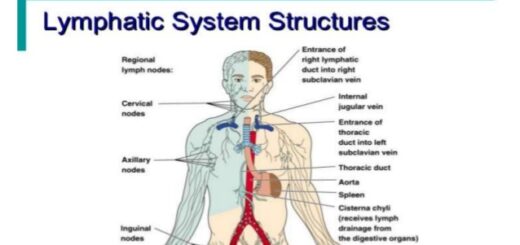Antibiotics advantages, disadvantages, resistance and How Antibiotics Work
Antibiotics are medicines that fight bacteria, either by killing the invading bacteria or they weaken them, so, the immune system can fight and kill them more rapidly, Most antibiotics are bacteria fighters and most of them are cost-effective and affordable. Side effects include diarrhea, an upset stomach, and nausea. Antibiotics can’t treat viral infections, such as cold, flu, and most coughs.
Antibiotics
Antibiotics are an extremely powerful class of drugs that reduce mortality from many epidemic infectious diseases that are responsible for millions of deaths every year, They are known as the antibacterials, They can destroy or slow down the bacterial growth in the body and they can treat or combat the bacterial infection in the body.
Antibiotics are substances that are obtained from bacteria and fungi, They are used as drugs to fight various diseases caused by harmful microorganisms, They are used to treat many diseases that were fatal before the development of antibiotics, and a few antibiotics are used to treat certain cancers.
Antibiotics can kill bacteria and prevent them from multiplying. Alexander Fleming discovered penicillin, the first natural antibiotic, in 1928, Fleming predicted the rise of antibiotic resistance, Antibiotics treat certain infections and can save lives when used properly.
How Antibiotics Work
Antibiotics are medications used to fight bacterial infections. They work by killing bacteria or stopping them from multiplying. They are essential in treating a wide range of illnesses, from minor infections to life-threatening diseases.
- Killing bacteria: Some antibiotics destroy the bacteria’s cell wall or interfere with essential functions like protein synthesis.
- Stopping growth: Others prevent bacteria from producing necessary proteins for growth and reproduction. They inhibit bacterial growth, allowing the body’s immune system to overcome the infection.
- Bactericidal: These antibiotics kill bacteria directly.
- Bacteriostatic: These antibiotics prevent bacteria from multiplying, allowing the body’s immune system to overcome the infection.
Common Types of Antibiotics
There are many different types of antibiotics, each with its strengths and potential side effects. Some common examples include:
- Penicillins: Widely used for various infections.
- Cephalosporins: Effective for a broad range of infections, including some serious ones.
- Tetracyclines: Used for acne, respiratory infections, and certain sexually transmitted infections.
- Macrolides: Often used for respiratory infections and skin infections.
Important Considerations
- Antibiotics only work against bacterial infections. They are not effective against viral infections such as the common cold, flu, or most coughs.
- Overuse of antibiotics can lead to antibiotic resistance. This occurs when bacteria develop the ability to resist the effects of antibiotics, making infections harder to treat.
- You have to complete the full course of antibiotics prescribed by your doctor, Stopping the treatment of antibiotics early can contribute to antibiotic resistance. Never self-medicate with antibiotics. A healthcare professional can determine if you need them and prescribe the right one.
- Antibiotics can cause many side effects such as diarrhea, nausea, and allergic reactions.
- Never share antibiotics with others. Antibiotics should be prescribed specifically for your infection.
- It’s crucial to use antibiotics appropriately. They should only be prescribed when necessary to treat a bacterial infection. Your doctor will determine if antibiotics are the right course of action based on your symptoms and a diagnosis.
When to Use Antibiotics
Bacterial infections: Antibiotics are effective against bacterial infections like:
- Strep throat.
- Urinary tract infections (UTIs).
- Skin infections.
- Pneumonia.
- Prevention: They can prevent infections in certain cases, such as before surgery.
Advantages of Antibiotics
Antibiotics are effective against infections caused by microorganisms, Some antibiotics are effective against many forms of diseases, They can save the life, They can kill bacteria within the body, They are used as drugs to combat various diseases which are caused by harmful microorganisms.
Antibiotics do not harm other normal body cells, It is possible to treat diseases with antibiotics that were fatal before the development of antibiotics, The prescribed antibodies can harm the disease-causing microorganisms but the antibiotics have been developed to attack the human cells for the treatment of cancer.
Macrolide antibiotics are strongly germ-killing medicines, They have been regarded among the best-tolerated antibiotics for almost 50 years, They have a broad antibacterial spectrum, They are simple to use, they have convenient dosing regimens and they are used daily or twice dosing regimens.
The antibiotics have a low incidence of gastrointestinal side effects, They can be used broadly by all age groups, They are safe during the pregnancy period too, They have enhanced acid stabilities, They do not create problems in the tissue and the intracellular penetration and small quantities of antibiotics are used as the food preservatives.
Antibiotics are one class of antimicrobials, a larger group that includes anti-viral, anti-fungal, and anti-parasitic drugs, They are reasonably harmless to humans, They can be used to cure infections caused by bacteria and they are used to treat infectious diseases in animals.
Antibiotics cure diseases by their property of being selectively toxic to the microorganisms, They are used to treat a variety of bacterial diseases, A small number of antibiotics have been developed to attack human cells for the treatment of cancer, They can cure cancer by only damaging the cells that are in the process of dividing.
Disadvantages of Antibiotics
Antibiotics can have many side effects as diarrhea, The overuse of antibiotics is the main concern worldwide, The overuse of antibiotics contributes to the increase in bacterial infections, So, The bacteria are becoming resistant to antibacterial medications.
Antibiotics can kill the healthy bacteria in the body, Sometimes antibiotics can lead to complications such as yeast infections, Some antibiotics may be allergic depending on your drug allergies such as sulfa which is commonly present in many antibiotics.
Many antibiotics will have side effects such as digestion issues, nausea, discomfort, diarrhea, and sensitivity to light, Some antibiotics induce hyper-sensitivity and can cause an allergic response, Most anti-microbial drugs, antibiotics included cause toxic side effects, and their long-term health hazards are not known.
Antibiotics cause some side effects, The side effects are varied and range from fever and nausea to major allergic reactions, The common side effect is diarrhea as antibiotic disrupts the normal balance of the intestinal flora.
New strains (mutants) formed by the mutations are resistant to the antibiotics, the new mutants are more adaptable and replace the non-mutated ones as they withstand the antibiotic attack.
Antibiotics kill the normal microbial communities in our body, Our body may lose some of the beneficial mutualistic bacteria, Which will upset the normal balance of the existing microflora and the microfauna.
The heavy indiscriminate use of antibiotics in poultry (the meat, the dairy products) production can transfer the residual antibiotics to human food and they can transfer the resistant bacteria to humans.
If the antibiotic is used long enough, The bacteria will mutate to withstand the antibiotic, This is known as antibiotic resistance, Many infection cases are caused by bacteria resistant to some antibiotics, The antibiotic-resistant bacteria create life-threatening infections and dangers that don’t respond to the antibiotics.
You can download Science Online application on Google Play from this link: Science Online Apps on Google Play
Cephalosporins antibiotics types, examples, Carbapenems, Monobactams & Glycopeptides
Antibacterial drugs definition, use & types, Penicillin classification & importance
Antibacterial agents types, Effect of Antibacterial Drugs & How do antibiotics work?
Types of protein synthesis Inhibitors Antibiotics & Uses of individual aminoglycosides
Antimicrobial drugs types, use, side effects, resistance & Empiric antimicrobial therapy
Vaccines types, Live vaccines, Inactivated vaccines, Subunit vaccines, Naked DNA & mRNA vaccines
Natural & Artificial Food Preservatives advantages and disadvantages





this was really very helpful.
Thank you very much for your comment
Very good
Thank you very much
I want to reference, who’s the publisher pls
https://www.online-sciences.com/about-us/
It was very helpful to my school project a d I got an A+ 👍☺️
Do your best to be the best
Thank you very much for your comment
Seriously loads of fantastic knowledge!
Best Essay writing
Thank you
Grateful
Hi, very good